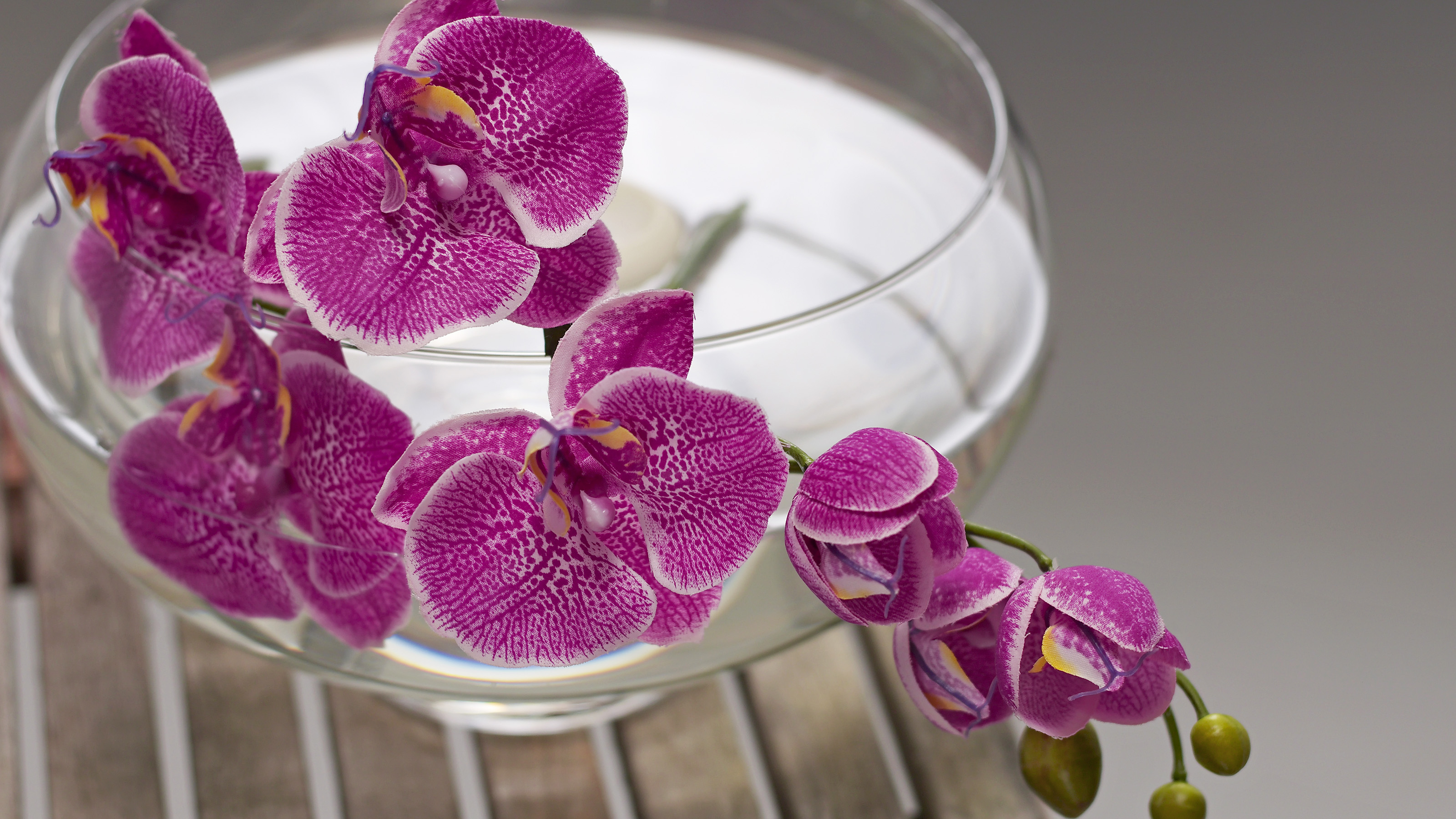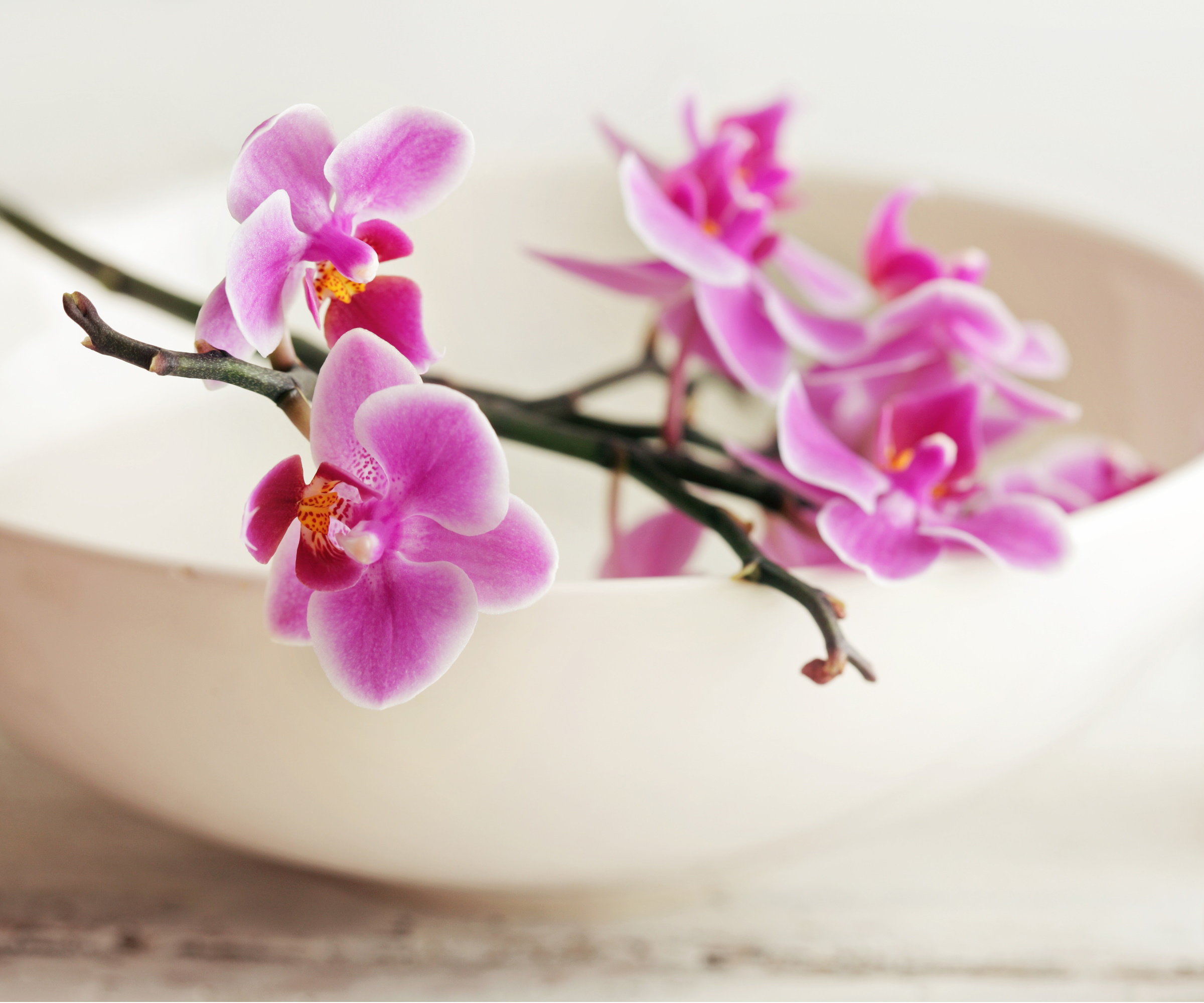Growing orchids in water, also referred to as water culture or hydroponic orchid growing, is a distinctive technique for cultivating these plants. This approach eliminates the need for traditional potting media such as bark or coconut husk. Instead, the orchid’s roots are either fully submerged in water or alternated between wet and dry periods.
This method has become popular because it helps prevent common orchid problems like root rot and leaf spots, which are often associated with traditional potting mixes. Moreover, it offers a soil-free environment that allows orchids to flourish.

Steps to Grow Orchids in Water
- Un-pot the Orchid: Remove the plant from its current container.
- Clean the Roots: Rinse the roots thoroughly and cut off any damaged or rotten parts.
- Choose a Container: Select a container with enough space for the roots to grow.
- Add Water: Use rainwater or distilled water to fill the container, ensuring the roots are partially submerged.
It’s crucial to monitor the orchid’s health and growth, as well as to fertilize the plant during water changes. There are two main methods of water culture: full water culture, where the roots remain partially submerged, and semi-water culture, where the roots alternate between wet and dry conditions.

Key Points:
- Water culture, or hydroponic growing, is a unique method for cultivating orchids.
- Orchids grown in water do not require traditional potting media.
- This method helps prevent root rot and leaf spots, common in traditional pot culture.
- Regular observation and fertilization are essential for healthy orchid growth.
- Two variations of water culture exist: full and semi-water culture.

Benefits of Growing Orchids in Water
Cultivating orchids in water offers several advantages compared to traditional potting methods. One of the main benefits is that it helps prevent issues such as root rot and leaf spots. Unlike soil-based potting mixes, which can retain too much moisture or harbor infections, water culture allows for a wet-dry cycle that mimics the orchid’s natural habitat.
This method not only ensures that the roots can breathe but also prevents overly moist conditions that lead to fungal infections. By using water culture, you recreate the natural growing environment of many epiphytic orchids, which absorb most of their nutrients and moisture from the air and water.

Preventing Common Orchid Problems
Water culture provides a clean, soil-free environment that reduces the risk of pathogens and poor drainage. With a consistent but balanced level of moisture, orchids can thrive without the worry of root problems or leaf spot diseases.
Replicating Natural Conditions
Orchids are unique plants that have adapted to a variety of environments. By using water culture, you replicate their natural growing conditions, allowing the roots to absorb moisture and nutrients in a way that supports their natural evolution. This can result in healthier, more vibrant orchids.
Overall, hydroponic orchid care offers an innovative alternative to traditional potting methods. It not only addresses common orchid issues like root rot and leaf spots but also creates a stunning display of orchids thriving in a soil-free, water-based environment.

How to Grow Orchids in Water
To successfully grow orchids in water, follow these simple steps:
- Un-pot the Orchid: Begin by carefully removing the orchid from its current pot and eliminating any remaining potting media or moss around the roots.
- Clean the Roots: Rinse the roots thoroughly and use sterile pruners to trim away any damaged or rotten parts. Allow the plant to rest and dry for a day or two to ensure that the pruning cuts heal properly.
- Choose a Suitable Container: Select a container that offers enough room for the roots to grow. It’s best to use a transparent glass container so you can easily monitor the orchid’s progress. To support the roots and prevent rotting, place clay pebbles at the bottom of the container.
- Add Water: Fill the container with rainwater or distilled water, as tap water can contain harmful chemicals that may damage the orchid. The watering method can vary—some growers keep the orchid roots fully submerged, while others prefer to alternate between wet and dry periods. Observing the plant’s health will help determine the most effective watering schedule.
- Fertilization: Use a specialized orchid fertilizer diluted to about a quarter of the recommended strength when changing the water. If your orchid isn’t reblooming regularly, consider fertilizing it with kelp once a month to encourage new growth.
Growing orchids in water takes time, patience, and experimentation to determine the ideal conditions for each individual plant. With proper care and attention, orchids can flourish in water culture, displaying exotic blooms and striking root systems.

